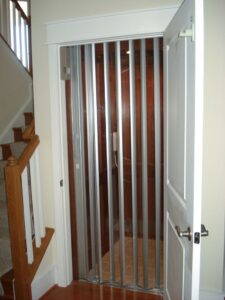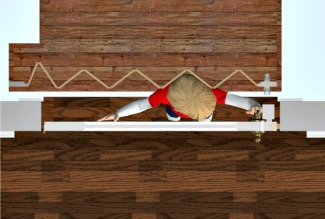Replace your accordion gate today with a purpose designed and patented product from Good Gate.
Much of the design and development time for elevator products is focused on safety. Both safety for the system itself but, more importantly, for the users (people). Part of the concern with elevators is that they operate automatically. This means that once you press that button and a light is illuminated, the elevator will run through a set of instructions in the controls to move the carriage to a specific position. Because the machine is automatic it will attempt to do this movement, regardless of anything in the way, unless safety devices and control structures are put in place to stop it from moving, in the event that a person is in a position that they could be injured or killed during this routine.
If you were to go in to any industrial setting where there is automation of machinery they generally do not let any people near moving machinery that is fully automated without significant safety guards in place. For instance, an automated robotic welding arm or an automated assembly robot typically have an entire cage built around them to ensure that no human can get in the path of their movement. Obviously, putting a cage around the entire elevator and avoiding contact with people defeats the purpose of the elevator machine.
For elevators the equivalent of a “cage” is the doors at each landing that separates people from the shaft, and potential falls, as well as the carriage where people enter and ride the elevator. The carriage is typically constructed from solid walls but in order to enter and exit the elevator there needs to be an opening and thus a device of some kind to close off that opening so that people do not enter and exit during elevator operation. This device is called a “carriage gate” or sometimes reduced to “car gate” or simpley “gate” in the elevator trade.
These carriage gates are also intended to avoid any potential pinching of extremities during movement. Due to the need for some kind of clearance between the moving carriage and the shaft walls, there is an inevitable pinch point created and the only way to avoid pinching hazards is to have a complete physical barrier between the people inside the carriage and the area around it.
There are a number of options for carriage gate configurations that are available on the market but one of the most common and economical options for private residence elevators is the Accordion Gate.


